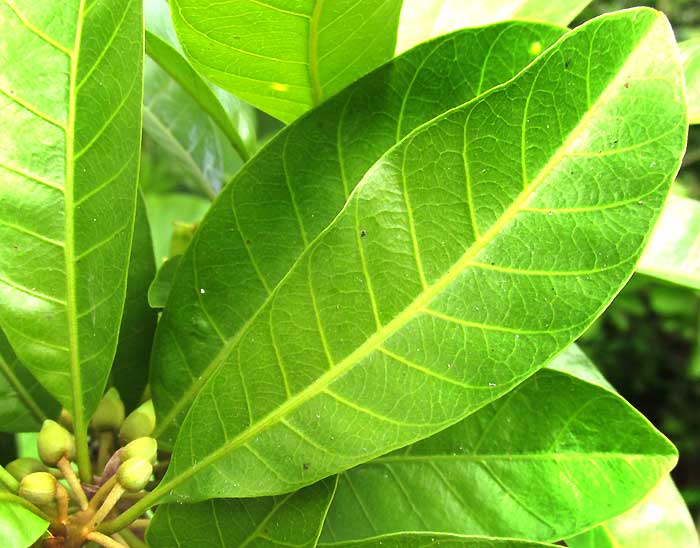Excerpts from Jim Conrad's
Naturalist Newsletter
from the October 13, 2008 Newsletter written in Yokdzonot about half an hour by bus west of Pisté, Yucatán, México
elevation ~25m (~82 ft), N20.707°, W88.731°
CANISTEL
I spent last Monday and Monday night in Mérida at a friend's house. Behind the house grew a handsome tree producing a very tasty fruit, which you can see below:
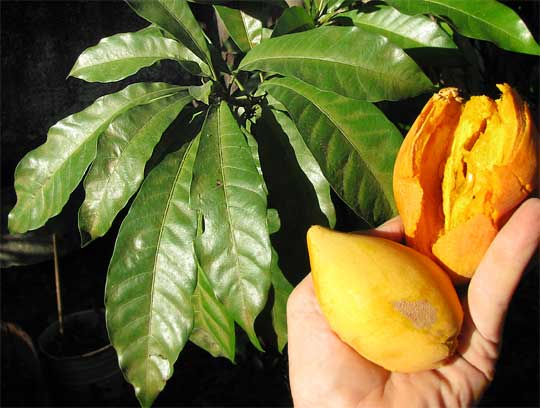
The fruit and tree are called Canistel, POUTERIA CAMPECHIANA. Canistel belongs to the Sapodilla Family, the Sapotaceae, famous for its delicious tropical fruits, foremost among them being Mamey, Sapodilla or Chicozapote, and Star-Apple or Caimito. Canistel is native to southern Mexico and Central America, but is planted in the tropics worldwide.
The same tree was producing fruit when I passed through there two months ago, and it's still loaded. The fruits, which contain two or three large, shining seeds, produce soft orange flesh with a texture and taste like that of well baked sweet potato.
As shown in the picture, leaves in this family tend to be fairly large, without lobes or teeth, leathery, evergreen, and somewhat clustered at the tips of branches.
from the April 27, 2019 Newsletter issued from Rancho Regensis north of Valladolid, Yucatán, MÉXICO;
elevation ~40m (~130 ft), N~20.876°, W~88.170°
CANISTEL FLOWERING
Presently, in a sheltered cenote, or sinkhole, on the rancho, a planted Canistel is flowering, as shown below:
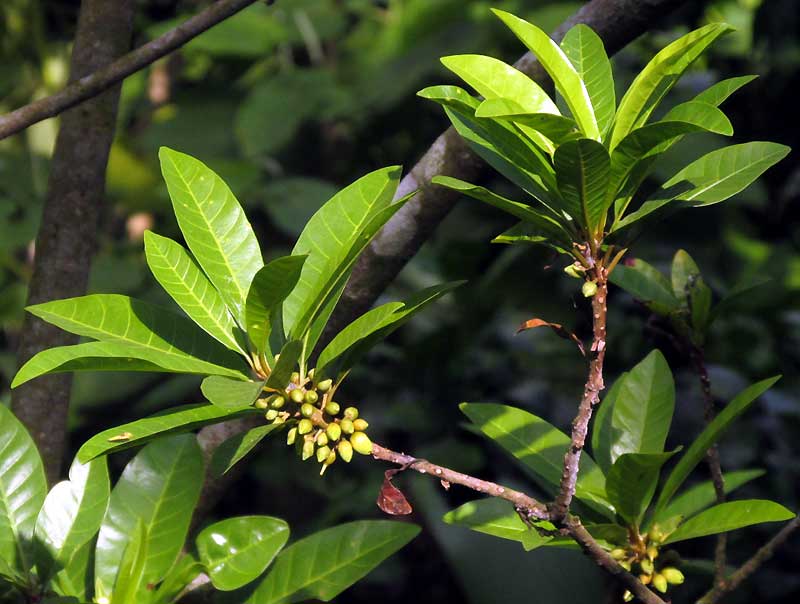
Very few of those blossoms will produce fruits. Below, the interesting, somewhat understated flowers are seen up close:
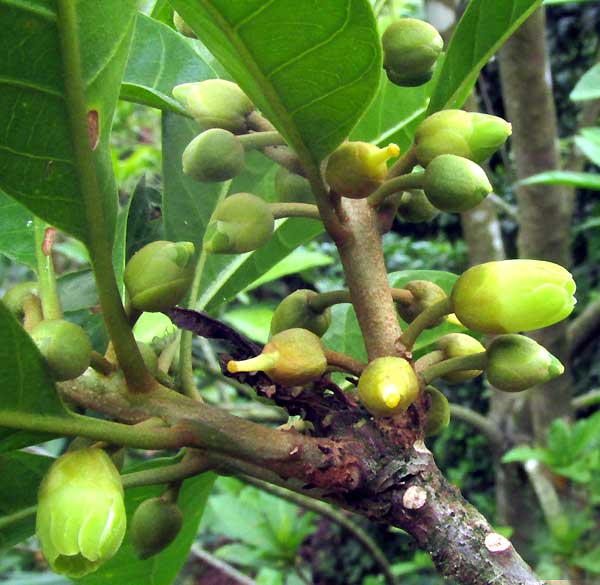
In that picture, flowers appear at various stages of development. A flower bearing a greenish corolla with five or six rounded lobes appears dangling at the image's bottom, left. A little below the picture's center, a more developed blossom has lost its corolla, leaving the expanding ovary's stigma and style protruding above the enveloping calyx. A fallen corolla showing stamens and staminodes (sterile stamens) attached to the corolla's interior wall is seen below:
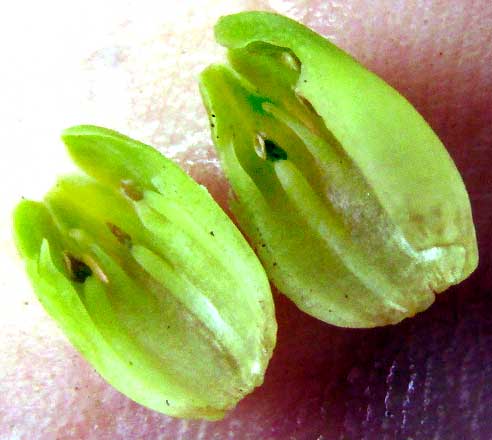
The stamens are tipped with dark, pollen-releasing anthers, and arise below the lobes' middles, while the sterile staminodes arise between the lobes. These are features distinguishing flowers of the Sapodilla or Sapote Family, the mostly tropical Sapotaceae, to which Canistel belongs.
Canistel is Pouteria campechiana. Canistel trees bearing flowers but not fruits easily can be confused with other members of the genus Pouteria, especially the Lucuma tree, Pouteria lucuma, which also often is planted. However, a botanical drawing at the Useful Tropical Plants website shows the staminode tips of Lucuma tree corollas equaling the height of the corolla lobes, while staminode tips on our Canistel corolla stay well below the corolla lobe tips. Such obscure details can be of determinative in botany.
The Canistel's genus Pouteria is a good-size one, often having species added to or removed from it. Traditionally taxonomists have thought of it as a "wastebasket taxon," a genus to dump species into that don't seem to fit better anyplace else. The Pouteria page at the Worldwidefruits.com website lists 149 Pouteria species.
To help confirm the identification, our Canistel's leaf is shown below:
